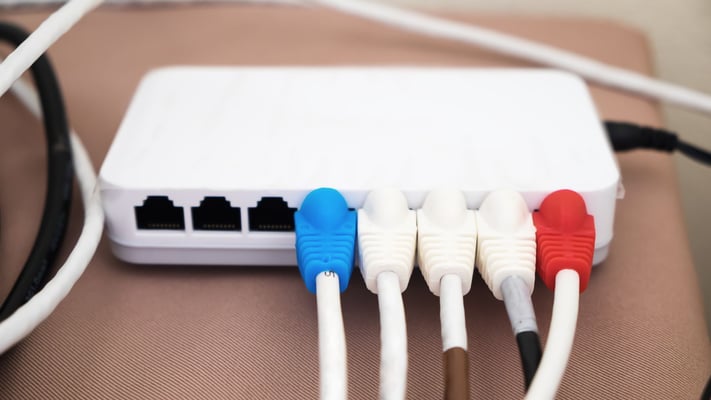Are You Paying Too Much For Broadband

Many New Zealanders, particularly older consumers, are paying more than necessary for their broadband plans, often because they have been “speedwashed” into believing they need faster internet than they actually use, new research suggests.
A study by comparison site NZ Compare found that a large proportion of people aged over 50 are spending excessively on broadband plans, largely due to confusion around internet speeds and a reluctance to shop around for better deals, RNZ reported.
NZ Compare chief executive Gavin Male said the findings showed that many households are sold high-speed, high-cost plans they do not need.
“Speed was considered an important factor when choosing a plan, but nearly half of those surveyed didn’t know what speed they were actually on,” Male said. “For most people, a reliable 100Mbps fibre connection is sufficient for streaming, working from home, shopping, video calling family, and managing bills online,” RNZ reported.
He added that a 100Mbps plan could cost around $35 less per month than a 500Mbps plan, saving households hundreds of dollars a year.
Male noted that when fibre broadband first launched, 100Mbps was the top speed available, and it comfortably met household needs then, as it still does for most families now.
“My household, with teenage children, runs on 100Mbps. We can stream on four or five devices simultaneously. It’s more than enough for most households,” he said, reported RNZ.
Telecommunications Forum chief executive Paul Brislen agreed that broadband speed should match household usage.
“A two-person household with one TV, two phones, and a tablet doesn’t need the same speed as a family with multiple streaming devices and gamers,” Brislen said. “Assess your needs and adjust accordingly,” RNZ reported.
Consumer NZ product test writer Nick Gelling said many people likely have faster connections than they require, but that wasn’t necessarily negative.
“It’s better to have too much bandwidth than not enough,” Gelling said. “Plans aren’t always flexible enough to match exact needs, but since Chorus increased speeds for many fibre plans at no extra cost in June 2025, moving to a lower-tier plan could now make sense,” reported RNZ.
Brislen encouraged consumers to review their broadband plan every 12 months.
“Telcos constantly compete for customers. If you see a deal from a competitor, your current provider will often match it if you ask,” he said, RNZ reported.
Male added that many New Zealanders stay with their providers out of habit, not realizing that switching is now quick and simple.
“Once fibre is installed, changing providers is as easy as switching your electricity supplier,” he said. “Shopping around can save you $400–$500 a year,” reported RNZ.
He warned that broadband companies tend to reserve their best deals for new customers.
“They’ll offer great introductory prices to attract you, then slowly increase rates by $5 or so a month, which adds up over time,” Male said, as quoted by RNZ.
Meanwhile, Commerce Commission telecommunications commissioner Tristan Gilbertson acknowledged that many consumers find the market confusing due to complex offers.
The Commission has issued new guidelines requiring telcos to clearly display the monthly average cost, disclose early-termination fees upfront, and provide standardised offer summaries to help customers compare plans easily.
“Early-termination fees are a recurring pain point,” Gilbertson said. “People often don’t realise they’ve signed up for them or can’t easily find out what they’ll owe if they switch. Providers must now make that information clear and transparent,” reported RNZ.
The message from experts is clear, while fast internet can be appealing, for most households, a reliable, reasonably priced plan is all that’s needed. Regularly comparing options and understanding actual usage can lead to significant savings.
Many New Zealanders, particularly older consumers, are paying more than necessary for their broadband plans, often because they have been “speedwashed” into believing they need faster internet than they actually use, new research suggests.
{% module_block module...Many New Zealanders, particularly older consumers, are paying more than necessary for their broadband plans, often because they have been “speedwashed” into believing they need faster internet than they actually use, new research suggests.
A study by comparison site NZ Compare found that a large proportion of people aged over 50 are spending excessively on broadband plans, largely due to confusion around internet speeds and a reluctance to shop around for better deals, RNZ reported.
NZ Compare chief executive Gavin Male said the findings showed that many households are sold high-speed, high-cost plans they do not need.
“Speed was considered an important factor when choosing a plan, but nearly half of those surveyed didn’t know what speed they were actually on,” Male said. “For most people, a reliable 100Mbps fibre connection is sufficient for streaming, working from home, shopping, video calling family, and managing bills online,” RNZ reported.
He added that a 100Mbps plan could cost around $35 less per month than a 500Mbps plan, saving households hundreds of dollars a year.
Male noted that when fibre broadband first launched, 100Mbps was the top speed available, and it comfortably met household needs then, as it still does for most families now.
“My household, with teenage children, runs on 100Mbps. We can stream on four or five devices simultaneously. It’s more than enough for most households,” he said, reported RNZ.
Telecommunications Forum chief executive Paul Brislen agreed that broadband speed should match household usage.
“A two-person household with one TV, two phones, and a tablet doesn’t need the same speed as a family with multiple streaming devices and gamers,” Brislen said. “Assess your needs and adjust accordingly,” RNZ reported.
Consumer NZ product test writer Nick Gelling said many people likely have faster connections than they require, but that wasn’t necessarily negative.
“It’s better to have too much bandwidth than not enough,” Gelling said. “Plans aren’t always flexible enough to match exact needs, but since Chorus increased speeds for many fibre plans at no extra cost in June 2025, moving to a lower-tier plan could now make sense,” reported RNZ.
Brislen encouraged consumers to review their broadband plan every 12 months.
“Telcos constantly compete for customers. If you see a deal from a competitor, your current provider will often match it if you ask,” he said, RNZ reported.
Male added that many New Zealanders stay with their providers out of habit, not realizing that switching is now quick and simple.
“Once fibre is installed, changing providers is as easy as switching your electricity supplier,” he said. “Shopping around can save you $400–$500 a year,” reported RNZ.
He warned that broadband companies tend to reserve their best deals for new customers.
“They’ll offer great introductory prices to attract you, then slowly increase rates by $5 or so a month, which adds up over time,” Male said, as quoted by RNZ.
Meanwhile, Commerce Commission telecommunications commissioner Tristan Gilbertson acknowledged that many consumers find the market confusing due to complex offers.
The Commission has issued new guidelines requiring telcos to clearly display the monthly average cost, disclose early-termination fees upfront, and provide standardised offer summaries to help customers compare plans easily.
“Early-termination fees are a recurring pain point,” Gilbertson said. “People often don’t realise they’ve signed up for them or can’t easily find out what they’ll owe if they switch. Providers must now make that information clear and transparent,” reported RNZ.
The message from experts is clear, while fast internet can be appealing, for most households, a reliable, reasonably priced plan is all that’s needed. Regularly comparing options and understanding actual usage can lead to significant savings.










Leave a Comment